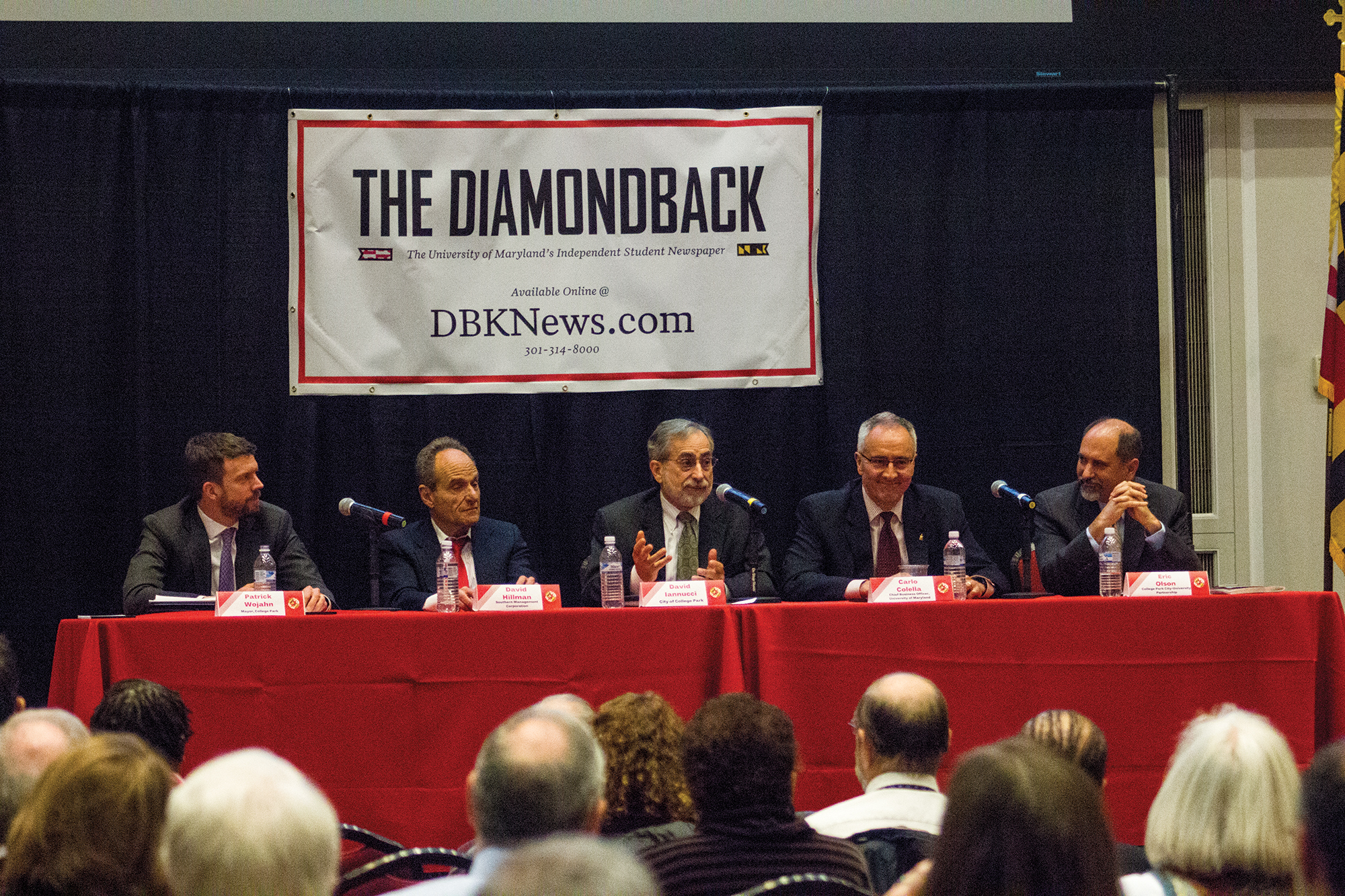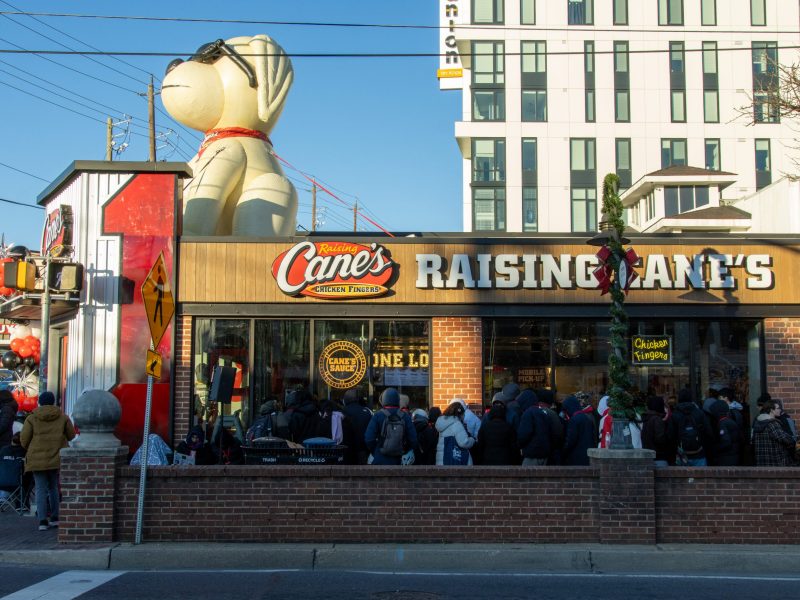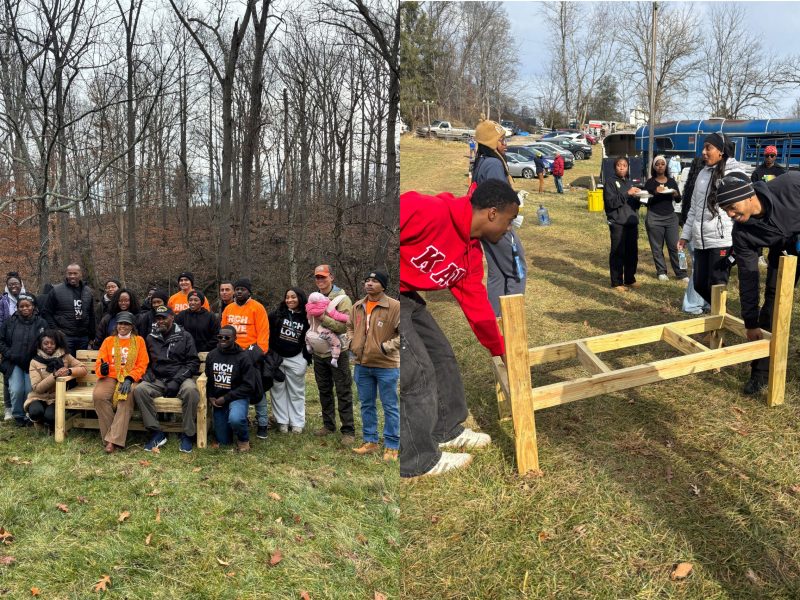By Jordan Fox and Carly Kempler
Prince George’s County and the University of Maryland are now working together with unprecedented collaboration, David Iannucci, the county’s assistant deputy chief administrative officer for economic development, said during a panel discussion on the campus Tuesday.
The discussion, hosted by The Diamondback, featured five panelists with roles within the university, city, county and business community and focused on the Greater College Park vision. Topics covered included creating a sustainable college town as well as the city’s upcoming development projects.
More than 100 people gathered in Samuel Riggs IV Alumni Center for the event, sponsored by Downtown College Park Management Authority, the university’s Campus Pantry, Southern Management Corporation and The Hotel at the University of Maryland. In addition to Iannucci, the panelists included College Park Mayor Patrick Wojahn, Southern Management CEO David Hillman, university Administration and Finance Vice President Carlo Colella and College Park City-University Partnership Executive Director Eric Olson.
Wojahn said this event was the “first of its kind,” adding that he wants to focus on transforming this city into a real college town.
“To me, a college town is a city that is able to utilize and leverage resources that come with having a university in your midst,” he said.
The panelists also discussed specific topics such as affordable housing, education, public safety, the upcoming Purple Line light-rail, the Innovation District and other economic developments.
Improving education resources in the county as well as well as at the College Park Academy was also a topic of discussion; Wojahn said the city is working to improve the quality of education for prospective families that might want to move to this city.
Some College Park residents were also concerned with a few of the development projects, posing questions about how residential areas will thrive and benefit from the downtown and university revitalization projects.
In response, Wojahn addressed public safety concerns with a “safety ambassador” safety program, which the city and the university are still working to institute. He also said the city is working in places like the Hollywood neighborhood to make College Park a place people want to live.
“Because of the large number of people here, there is inevitably crime because of that,” he said.
Olson mentioned the success of the new homeownership program, which was created to incentivize university employees to live in College Park. As of December, the program has relocated five university faculty and staff members to College Park neighborhoods.
Other panelists also pointed out that these communities, such as Cherry Hill, Hollywood and North College Park, will see trickle-down effects from the bigger projects in the downtown and university areas.
In addition, Wojahn, as well as a few other panelists, called The Hotel, a multimillion-dollar investment on Route 1, the most exciting and influential development project in the Greater College Park vision.
“It will be a place where people will want to gather for food and conversation,” Hillman said. “It’s going to become a center of the area’s commerce.”
The Purple Line and the potential FBI headquarters relocation to Greenbelt were other big-name projects discussed during the event. Iannucci said the Purple Line will transform the county and the region, boosting accessibility and reshaping the area’s economy.
Wojahn also mentioned students will have free access to area stops along the Purple Line, as it will pass through this university’s campus. However, the Purple Line is not expected to open for service until 2022, making it a six-year construction process.
Hillman said this revitalization “train” is not going to stop and that the city will continue to work with the county and this university to completely transform College Park into a vibrant top-20 college town.



